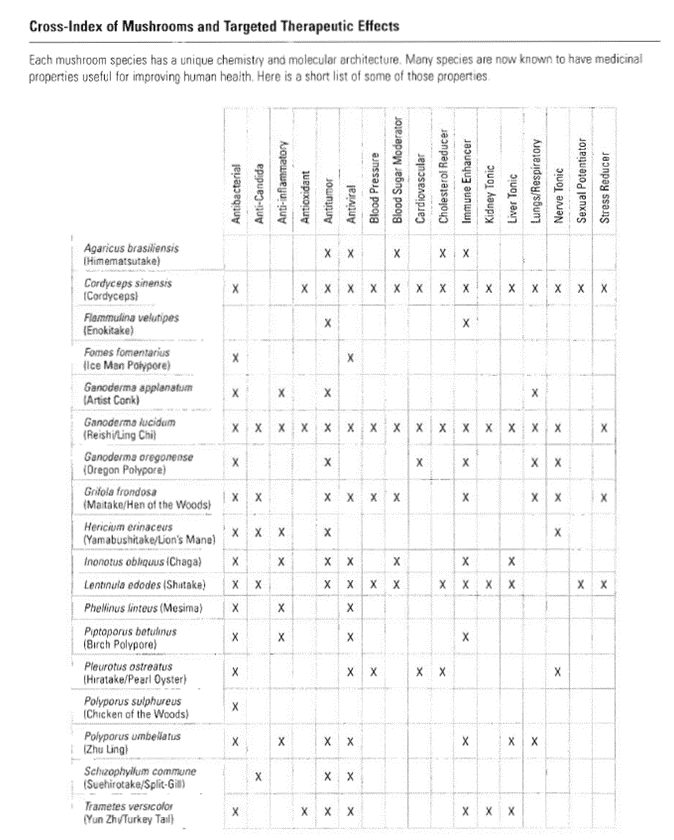THE FASCINATING STORY
OF THE MAN WHO WANTED
TO SAVE THE WORLD WITH FUNGI
HOW PAUL STAMETS WILL CHANGE
HOW YOU LOOK AT MUSHROOMS FOREVER


Paul Stamets was a shy kid with an embarrassing stuttering and with dreams of becoming a revolutionary scientist. When he was 12, his father’s business failed and his family disintegrated. He went to live with his mother in poverty, and in high school he joined the counterculture. His life changed the day he tried hallucinogenic psilobycin mushrooms. Under influence, Paul climbed up a tree, only to find himself too intoxicated to climb back down. As a thunderstorm broke the skies open, he felt the danger, but he felt part of the forest and the universe as he had never experienced before. This led him to question his life and reflect on how to change it. He suddenly stopped stuttering, and devoted himself to studying the fungi he credited with his transformation. With the help of a mushroom manual, he started finding psilocybes growing everywhere, and he inquired the mysteries of other species too. He applied to university, determined to become a mycologist. By the time he graduated in 1979 he was an accomplished field scientist, laboratory researcher, taxonomist and expert cultivator. He’d discovered new species and published several books, including The Mushroom Cultivator, a reference for home and commercial growers. As he got married and had to support a family, he remained an adjunct Professor at Evergreen University while starting a research business on the side, and soon he bought a 20-acre farm where he studied the macro fungi’s planet changing powers. Here are 5 of the main superpowers of fungi he described.

INTRODUCTION
At that time, bioremediation experts were working on hydrocarbon-eating bacteria to clean up oil-soaked soil, but the bacteria were not performing as needed, and the researchers turned to Stamets for advice. He recommended they try an easy-to-grow oyster mushroom, Pleurotus ostreatus, and sent samples over. The technicians covered the mushrooms with oil, which was almost entirely consumed within 3 weeks. Unfortunately, their bioremediation company went bankrupt and the trials were discontinued, but later at Battelle, excitement rose again and tests were launched to select the oyster mushrooms with highest oil-digesting capacity. The top performers were then tested outdoor to clean diesel fuel. Some areas were treated with fungi, others with bacteria or enzymes, and one left empty as control. In 4 weeks, the mushrooms burst huge. Insects were attracted to eat the fungi, and birds flew in to eat their larvae, contributing to depositing seeds. After 8 weeks, the test area was flourishing with plants and hydrocarbons had dropped from 10 000 parts per million to less than 200. The other test piles remained dead, dark and foul-smelling. In this experiment, fungi proved not only able to decontaminate hydrocarbons very quickly, but identified as a “gateway species”, welcoming life back to the area.
Mycoremediation potential doesn’t stop at hydrocarbon management: certain fungi also appear able to metabolize plastics, and even radiation. Stamets is now working on a project using fungi that absorb heavy metals for the decontamination of Fukushima radioactivity.
MYCOREMEDIATION: DECONTAMINATING SOIL AND BRINGING NATURE BACK
Meanwhile, Stamet’s farmhouse had grown infested by ants, attracted by a white-rot fungus that was growing on the walls. Stamets promised his wife he’d take care of it, and he started searching for a natural, nontoxic pesticide. It was known that some mold species could infect and kill insects with their spores, but social insects were good at smelling the spores and avoiding to bring them in the nest. Stamets cultured Metarhizium anisopliae mold for many generations until the fungus evolved a mutant form which sporulation cycle was delayed for days or longer, tricking the insects into carrying the fungus into their nest, to only later explode their spores onto them. He placed rice spawned with mycelia in a dish in the kitchen, and just a few hours later the dish was swarming with ants carrying the moldy rice into their burrow in the walls. Two weeks later, the house was ant-free, definitively.
Similar results were obtained with another type of modified mold. In 2003, Stamets patented his method and sold it to a company to bring it on the market - completely reinventing the industry of pesticides, with a potential to substitute chemical pesticides that harm biodiversity and soil richness.
MYCOPESTICIDES: TRICKING INSECTS WITH FUNGI NATURAL WEAPONRY
The discovery of mushrooms’ potential in medicine goes back to (at least) 1928, when Alexander Fleming discovered the antibacterial properties of a penicillium, coming back to his laboratory after holiday and finding evidence of bacterial inhibition in his outgrown petri dishes, leading to the first antibiotic being born, penicillin.
Stamets provided capsules of freeze-dried fungus for a 7-year study to determine whether turkey tail mushrooms could help breast cancer patients whose immune systems had been compromised by radiation therapy – and the results were positive: natural-killer cell activity, CD8 T-cell counts and other immune functions improved significantly with the treatment. Stamet’s mother, by coincidence, developed breast cancer right in the middle of the trial, and although she was ineligible for the study, Stamet’s gave her capsules. While the mushrooms alone can’t be credited for her healing, the tumor was gone in 6 months.
Very rare fungi called Agarikon could bring a treatment for tuberculosis, and Stamets argues how crucial it is to preserve the genomes of endangered mushroom species for the future of human health.
Partnering with his wife Dusty Yao, herbal medicine practitioner, Stamet’s Fungi Perfecti farm developed into grow rooms for nutraceutical mushroom extracts, aimed at boosting the immune system and providing antioxidant, antiviral and antibacterial properties, although with an array of benefits going way beyond (see table).
Given the extraordinary activity of some fungi against flu viruses, his statement “Save the ancient forest as a matter of National Defense” has never been so relevant.
MYCONUTRIENTS: MUSHROOMS IN HEALTH AND DISEASE
The presence of fungi and extensive mycelia in the soil is life-giving. The mycelia exudes enzymes and acids that transform rock into biologically accessible minerals and renders complex organic matter more digestible. The mycelia structure holds the soil together, helps retain water, and makes its nutrients available to vegetation. Mycorrhizes even create a symbiosis with plant roots and help absorb nitrogen in exchange from sugar from the host. Stamets refers to fungi as the soil magicians, able to channel nutrients and information at the scale of the planet. Soil being the “ecological currency” from which all life on ground stems, “mycologists can become environmental artists by designing landscapes for both human and natural benefit”.
“Habitats, like people, have immune systems, which become weakened due to stress, disease, or exhaustion. Mycorestoration is the use of fungi to repair or restore the weakened immune systems of the environments.”
For these reasons, fungi could be used to grow ancient forests quicker, curb desert expansion, but also support farming and protect against famines especially in war zones where people are regularly displaced, to bring quicker food to threatened populations.
MYCOFORESTATION AND AGRICULTURE: HELPING RESTORE THE BIOSPHERE
WHERE ARE WE NOW ?
Although Stamet’s ideas aren’t yet exploited on a global scale, projects are finally bubbling from environmental consulting firms, in a non-profit in Ecuador to clean up oil waste left by drillers, and in Massachusetts to scrub petrochemicals from an old mill canal.
His farm Fungi Perfecti has given rise to a brand of food supplements based on organic mushroom extracts for energy, mental performance, longevity, relaxation, immunity, detox and digestion, but also producing fertilizers for gardening, and proposing mushroom cultivation tips and equipment. The company is more than 10 times climate positive, and Stamets works with entomologist Dr. Steve Sheppard to help bring the antiviral and protective properties of fungi to save the bees from collapse, with impressive results as published in Nature. Stamets also keeps teaching through seminars to bring the awe and power of fungi to the greatest numbers.
" The path to the future
is the path of the mycelium "
Nina Vinot’s education is in Biology, Agronomy and Nutrition, with an Engineer Degree from AgroParisTech, Paris Institute of Technology for Life, Food and Environmental Sciences. Her career is since almost 10 years in the world of Health-Promoting Bacteria or probiotics, used in the sector of food supplements. Her Passion is to transmit an awe for life and to help support wellness and sustainability through writing or any other possible medium.

Stamets’ first challenge on his new farm was his sewage contaminated by E. coli and the legal request to update his septic system within the next 2 years. He didn’t have the money to complete this work, but he knew the structure of the mycelium outperformed cotton filters – and exerted antibacterial properties. He made and placed filters enriched with grown mycelia in the water system. At the next authority control, he had successfully cut down the contamination by 100-fold, while benefitting from a summer harvest of delicious Garden Giant (Stropharia rugosoannulata).
His ecological wastewater management system was then installed in other farms and reached environmental journals.
MYCOFILTRATION: A NEW SEWAGE DECONTAMINATION IDEA
HISTORY & SCIENCE





